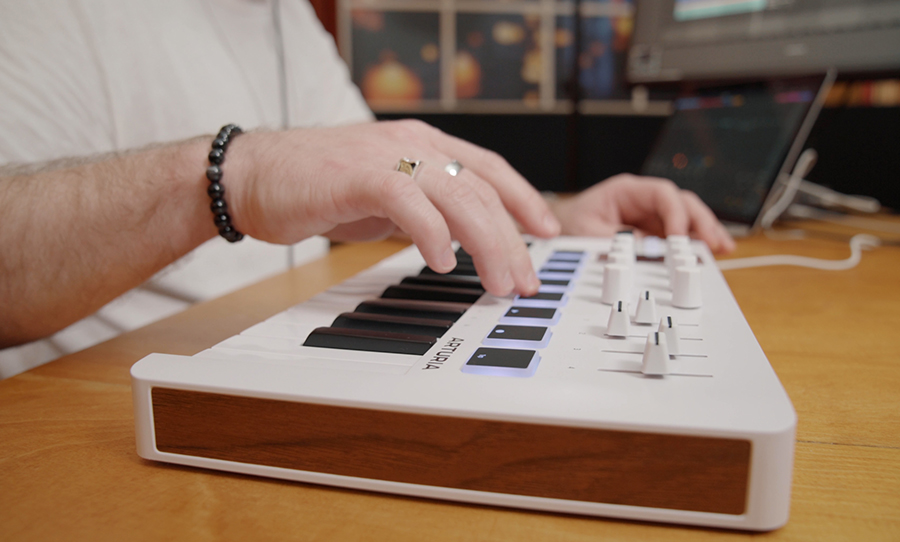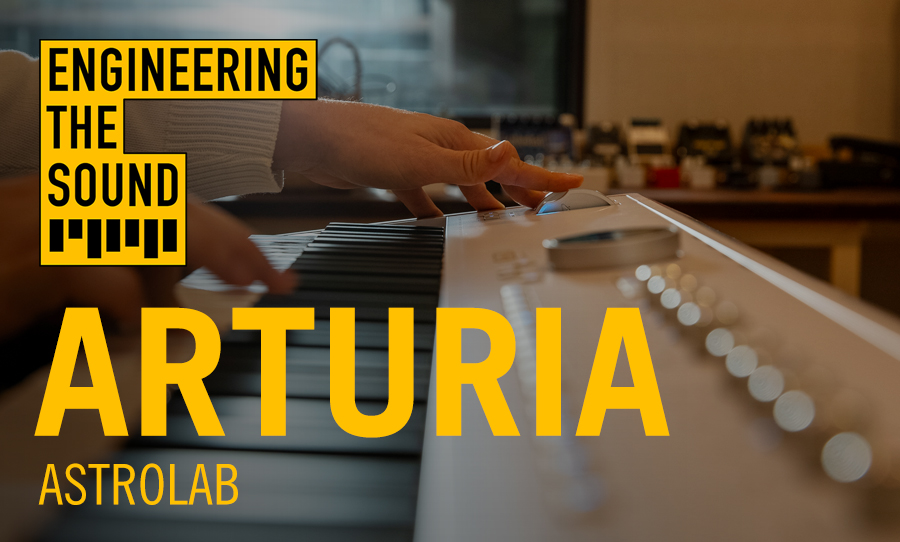We recently reviewed the brand new Arturia MiniLab 3 MIDI controller, which made us ponder: Why are Arturia MIDI controllers a staple in studios? We took a deep dive!
Arturia launched itself in the year 2000 in France, founded by two university students — Frédéric Brun and Gilles Pommereuil — with Storm. It was an end-to-end music production software for the home computer, otherwise known as a DAW (Digital Audio Workstation). Little did they know most musicians would go to a music store and say: “Can I buy an Arturia MIDI controller?”
Zooming 10 years on, they released The Analog Experience: their first MIDI Controller…BUT this integrated software and hardware! A world first. It came with thousands of presets and the design felt like you were playing on a real synth — something that the music community needed to ease the transition of analog to digital.
It’s probably that attention to user detail or the fact that their software is so darn good as to why they have been the leaders in the MIDI controller world. Come with us on a journey through Arturia’s MIDI controllers!

The Analog Experience
With wooden veneer sides, knobs, buttons and faders plenty — and a few pads — the Analog Experience presented itself more like an analog synth than a MIDI controller. But that’s what it was, something quite foreign at the time that used software to make music. WHAT?!? Yes, kids, these ideas were new and fresh and came with a LOT of speculation.
Arturia knew they had to do a few things to make it work. Make it feel like you were playing a synth, and use their incredible software emulations instead of trawling eBay for rare — and still working — synths (eBay was underground and cool at the time).
The Analog Factory series morphed and changed over the years — always keeping that ‘analog synth’ look and feel — between larger 61 keys, smaller 25 keys, more pads, more faders, more software too. Arturia is up to V Collection 9 now, we recently review that, you can watch that here: Arturia: V Collection 9 | Full Demo and Review

The Step Range
Keeping with their integration of digital and analog they dropped their Step Range in 2014. Arturia intended to offer a compact controller that would step-sequence using MIDI and CV controls all with tactile controls and feeling like you could make it the hub of your studio.
The Step Range still in that MIDI controller land that inspires analog synth owners to hook it their children up and make them talk. Kudos to Arturia for wanting to maintain that analog and digital can co-exist.

The MiniLab Range
The MiniLab range took off from the Analog Factory and Analog Lab range started, making MIDI controllers more portable — but still with integration and their class functionality. We recently got our hands on the MiniLab 3 and gave it a good work out. As well as being the world’s first eco-designed MIDI controller, it uses specially-made scripts to integrate with your DAW and it comes with Analog Lab Intro, which also brings all the knobs and faders to life making it seamless for tweaking the software.
This MIDI controller honestly suits everyone from touring musicians who want to get ideas down on the plane, to studio professionals who want to add musical ideas easily and quickly without taking up a huge amount of real estate.

A few worthy nods to their analog synths — that can also be used as MIDI controllers
In 2012 Arturia took a step into analog synth territory with the release of the MicroBrute. It’s a well-laid-out, affordable, monophonic synth with 25 keys and all the controls on the panel ready for tweaking. Perfect for bass lines, Arturia released its sibling the MiniBrute: a Semi-modular Analog Synth. Both of these also have MIDI I/O and USB meaning you can use them as a MIDI controller.
In 2019 they dropped the MicroFreak, their first hybrid digital and analog synth with a multi-mode oscillator and Oberheim SEM inspired analog filter. Just one year later they dropped the PolyBrute featuring 6 analog voices with a digital matrix and becoming their flagship of the range. Alex Hartman — who we interviewed recently (watch here) — played a hand in the design of this beast.
For more information on anything you’ve seen here head to Arturia.com



